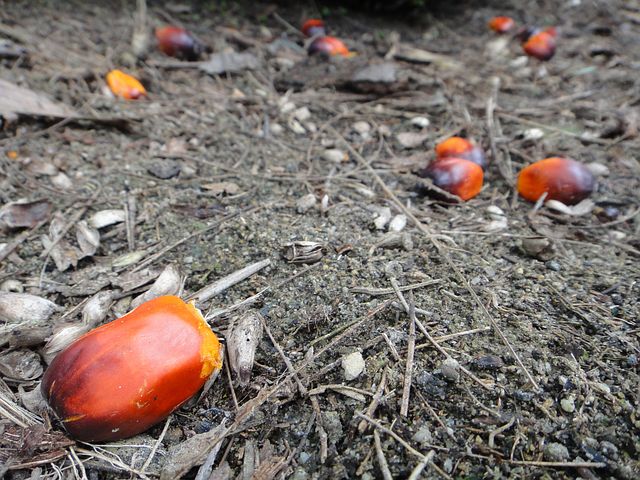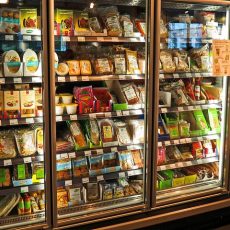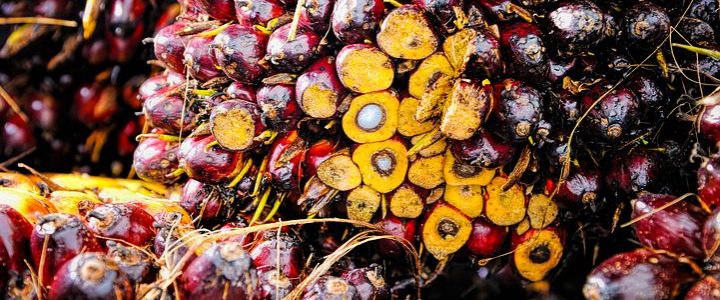
We know by now that a huge percentage of products we pick up off the grocery store (or pharmacy) shelf contain palm oil. If we’re not eating the product we’re likely putting it on our faces or in our bath water. It’s estimated that 50% of all consumer products contain this ingredient! And many times, we aren’t reading ‘palm oil’ in the ingredient list! Throughout the manufacture process the original palm kernel or palm oil might go through complex stages of production, meaning that it’s often a palm oil derivative which lands in the final product. There are more than 300 ingredient names (and counting) which are usually a palm oil derivative. But just to make the already cloudy situation even more opaque, some of these ingredients can be produced without the palm kernel or oil. SLS and SLES, sodium laurel ethyl sulphate are prime examples, as they can also be produced from petroleum or coconut oil. Confused yet?
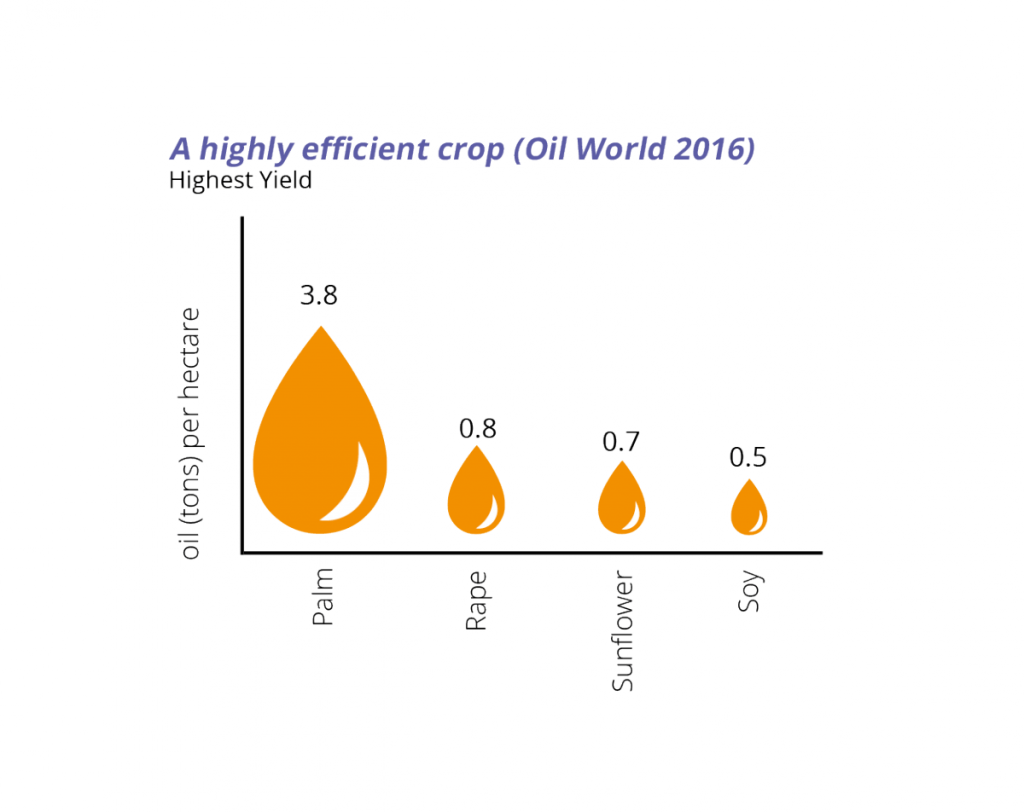
Here’s some quick facts about palm oil:
- > The oil palm tree is native to West Africa, but was imported to South East Asia in the mid 19th century;
- > It likes tropical, humid conditions, and yields the most fruit when grown 10 degrees either north or south of the equator;
- > Oil palm is the highest yielding oilseed crop, so it’s not surprising that it’s also the world’s most traded one;
- > The plantations cover more than 27 million hectares of the Earth currently, and are called ‘green deserts’, based on the removal of all biodiversity (and human settlements) to plant this monoculture crop;
- > It is high in both saturated and unsaturated fats, but contains no trans fat;
- > Interestingly, in Europe, the majority of that imported has actually been used for biofuels – but earlier this year, it was ruled by the EU Commission that palm oil was unsustainable and caused too much deforestation, and therefore its use wouldn’t count towards the EU’s renewable energy targets (the main reason is has been used as biofuel);
- > One oil palm tree can produce fruit for up to 30 years;
- > Every oil palm tree requires about 3 meters of clear space around its base to allow full growth – but this is much less than most other oilseed trees.
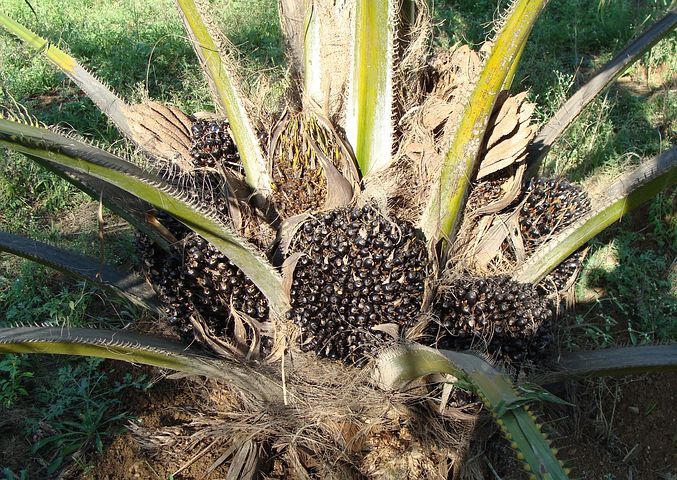
The main reason that oil palm plantations are considered damaging is that, as mentioned above, they require immense deforestation. Of course it’s obvious that this leads to eradication of biodiversity (read: death of thousands of animals and many plant species); but it also reduces Earth’s ability to sequester carbon dioxide from the atmosphere (the Indonesian rainforests store more carbon per hectare than Amazon); and it’s a direct contributor to greenhouse gases – the majority of oil palm plantations in SE Asia are where peat swamp forests once were, and the draining of the land and subsequent burning of the remaining foliage leads to massive carbon dioxide release. The recent, in fact still raging, fires in Indonesia, are testament to the lengths that farmers and corporations will go to for more oil palm plantation land. Then there’s the fact that some large palm oil companies also have ties to logging – so it’s in their best interest to clear forested land, often illegally, as they collect a paycheck twice. Just some of the animals at risk of being killed for their habitat, be it through poisoning, being literally run over by equipment, burnt or starved, are tigers, elephants, orangutans and rhino. Palm oil is such a cheap product, but the price these animals pay is honestly unacceptable.
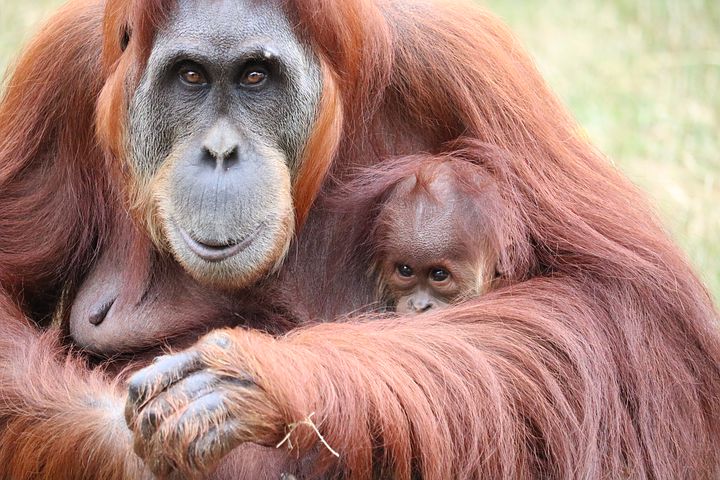
Then there’s the human rights issues. Palm oil plantations have been deemed an area at risk of forced and child labor by the US Department of Labor. Some palm oil companies have been known to bulldoze entire villages because they were in the wrong place, or set about targeted killing of villagers.
So, we should clearly all boycott products with palm oil, right? Well actually, no. Palm oil is far cheaper, less environmentally damaging and far more yielding than all other oilseeds. It requires less land (believe it or not), less energy input, less pesticide use and less fertilizer. And with decreased demand for palm oil, there would be less incentive for farmers to go about their business in a sustainable fashion. Which brings me nicely to the subject of sustainable palm oil. So what does that actually mean? Plantations which are grown and harvested in an environmentally and socially responsible manner. Drilling down further, this means strictly adhering to conservation areas; protecting endangered species; allowing safe animal migration paths through the plantations; utilizing renewable energies and importantly participating in NO deforestation or peatland development. But how could this possibly be achievable? Thankfully there are organizations dedicated to ensuring the sustainable future of oil palm plantations. The WWF led the creation of the Roundtable on Sustainable Palm Oil (RSPO) in 2004 and currently has more than 4,000 members in 91 countries, who represent all links across the palm oil supply chain. This NGO aims to make sustainable palm oil the norm, and introduced certification for companies who deal in palm oil, and there is a specific subsidiary for the US: the North American Sustainable Palm Oil Network (NASPON). Another watchdog is the Palm Oil Initiative Group (POIG) who are a collection of NGOs and progressive palm oil producers who built a set of values built on the RSPO standards, and stipulate “that palm oil operations must be free from deforestations, destruction of peatlands, and human rights abuses.” And of course there’s the Rainforest Alliance certification for measuring the sustainability of corporate practices.

While organizations can do great work to monitor the situation from up high, the WWF has created a scorecard, which takes a closer look at brands who use the oil – and hold them accountable to promises they made on transitioning to sustainable palm oil. A brand new scorecard will be released on Dec 11th, but if you cant wait that long to see how your fave brand is doing, jump onto the 2016 version which hold a magnifying glass to 137 companies who manufacture across America, Europe, the UK, Canada and Australia. This is another example of us, the consumer, holding power within our wallets, and we should use it! Bunnyarmy provides a list of brands who use sustainable palm oil, and it’s a great double whammy, as they’re obviously cruelty free also! And the RSPO provides a full list of individual products which have approval to display their trademark.
So the moral of the story: research! Hit up the links above and read. As we move towards a more sustainable future from every perspective, it’s imperative that we arm ourselves with knowledge, which is the only way we can implement personal change and thereby effect global change.
